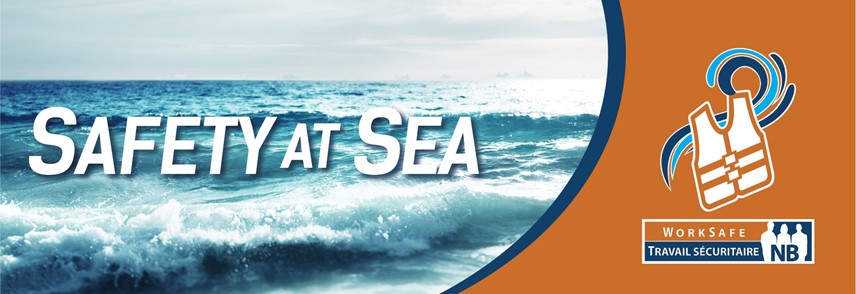


Now that fishing vessels are considered a place of employment under the Occupational Health and Safety (OHS) Act, WorkSafeNB is thrilled to be able to provide you, New Brunswick’s fish harvesters, with health and safety advice and guidance.
We’ve developed this section to ensure you have the information you need to work safely in and around the sea.
What has changed?
With fishing vessels now considered a place of employment, all the same laws and regulations that apply to New Brunswick workplaces now apply to fishing vessels. This includes: the Occupational Health and Safety (OHS) Act; General Regulation 91-191; and the regulations for Working Alone; Workplace Hazardous Materials Information System; and, First Aid.
In addition, approved life jackets or PFDs must be worn at all times when working on a fishing vessel. (Some exceptions apply – see our FAQs.)
Who is responsible for my safety now?
Occupational health and safety relies heavily on the internal responsibility system (IRS). Under the IRS, everyone in the workplace – both employees and employers – is responsible for their own health and safety and for the health and safety of those around them. That means that everyone on the boat is legally responsible to ensure that their workplace is safe and that everyone on it works safely.
However, an owner and/or captain, has other responsibilities. These are:
What can I expect from WorkSafeNB?
Our goal is the same as yours. We want to ensure that you return home safely at the end of your workday. WorkSafeNB will support you with education and resources to help make your vessels healthy and safe workplaces. You’ll find on this page a number of tools and resources to help do this.
If you don’t find what you’re looking for, please drop us a line at prevention@ws-ts.nb.ca.
When does the legislation come into effect?
While the legislation was enacted on December 4, 2022, to allow you time to get familiar with your responsibilities and make necessary adjustments to vessels and equipment, WorkSafeNB will not begin to monitor compliance before June 1, 2024.
Safe at Sea - Activity Book for Children
While the risk of drowning is a common hazard in the fishing industry, there are several other hazards to be aware of to avoid injury. The following resources can help: